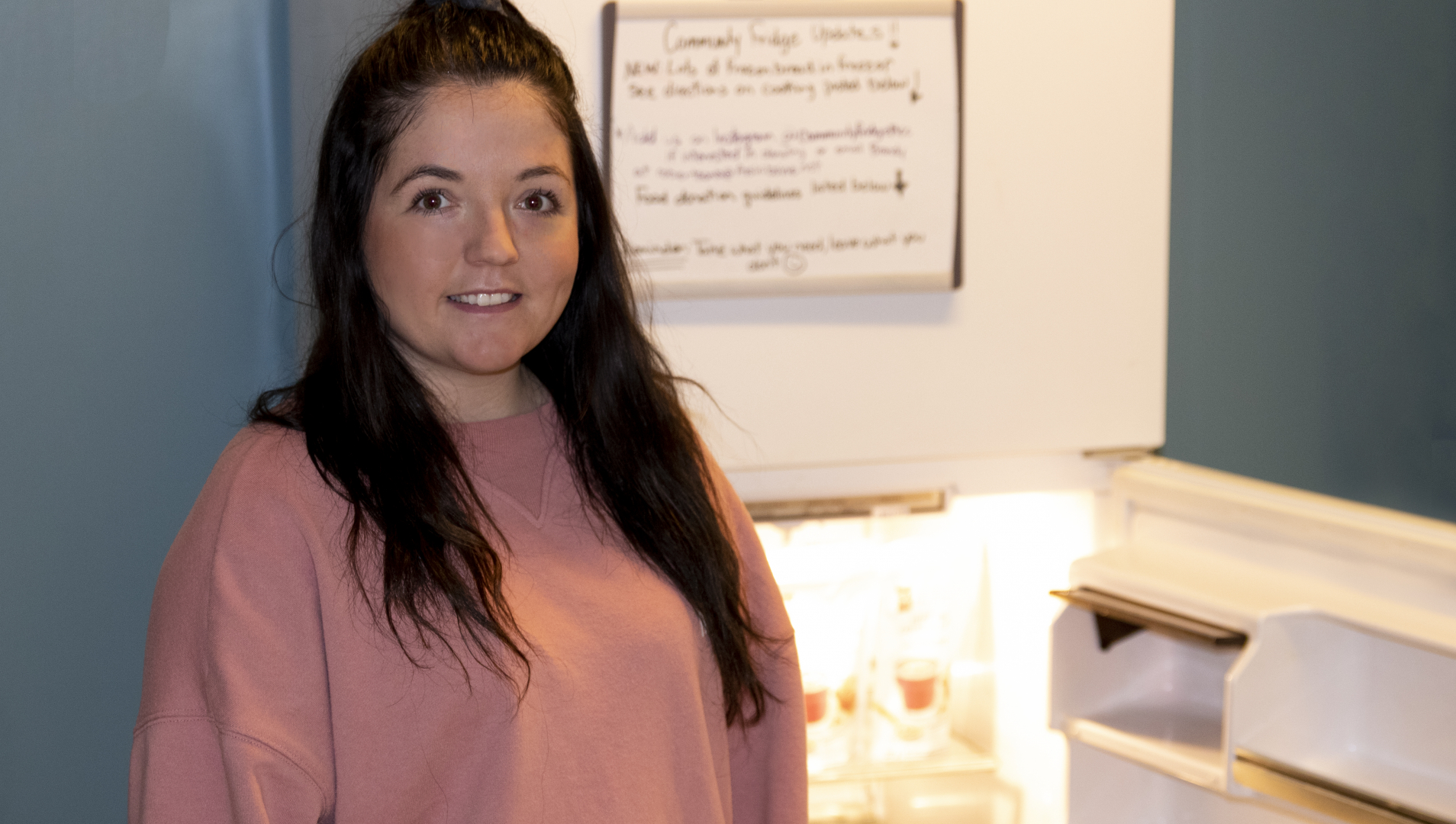Assiniboine student’s Community Fridge project tackles student food security
June 6, 2022
Sara Madill wanted to make a difference in the community, so when it was time for the Land and Water Management student at Assiniboine Community College to choose a Capstone project to work on, she took it as her opportunity to help fellow students who may be experiencing food insecurity—working to reduce food waste at the same time.
“There’s lots of stress involved in being a student already, and it can be hard to keep on top of buying and purchasing healthy food, especially when those healthier foods can be more expensive …so having this type of initiative on campus can help students who may be struggling,” said Madill.
“It also focuses on reducing food waste. A lot of food does end up in the landfill, so that aspect of it is definitely good for the environment. The life cycle of the food process before it ends up in the landfill generates a lot of greenhouse gas emissions and pollution, as well as the decomposition process also creates a lot of harmful effects on the environment, so reducing the total amount of food that ends up in the landfill is good.”
After consultation with the Assiniboine Students’ Association, Madill got to work acquiring and stocking a community fridge on the college’s Victoria East Campus, providing food for students or staff who might be in need.
With funding received from the Students’ Association, Madill said she found a used fridge on the local buy and sell website e-brandon.ca, picked it up, scrubbed it down and put it in an allocated spot near the Students’ Association lounge.
“Food security is a considerable concern for our college students, as studying full-time can cause financial stress,” said Assiniboine Students’ Association Executive Director, Matthew May. “The elected members of the Students’ Association Council immediately resonated with Sara’s vision and wanted to see this as part of the food security offerings for students at Assiniboine.”
“Having a full kitchen helps students stay healthy and energized to keep up with the demanding rigors of their programs.”
Working closely in partnership with the Brandon Food Council, Madill has been able to fully stock the fridge twice since it got up and running in mid-March.
“The first shipment was amazing, we had the whole fridge full,” Madill said. “I know that’s not something we can sustain consistently, but we hope in the future that we get more partnerships and get a big committee created so we have lots of help and more donors.”
The Manitoba Institute of Culinary Arts at Assiniboine has also provided food donations as well, Madill said.
“It’s definitely something that’s needed on campus. I’ve seen a need for it just in the month we’ve had it up and running,” Madill said. “When I’m there cleaning it and maintaining it, I’ve had a lot of students come up and ask me when the next shipment would be in or telling me that it’s great and they like the idea. I’ve had student advisors and other instructors give me positive feedback on it as well.”
The most challenging part of the project was navigating the food donation guidelines, Madill added.
“There’s a lot of rules and regulations on what you can and cannot stock, but it’s understandable. You don’t want to have anyone getting sick,” Madill said.
James Hood, an instructor at Assiniboine who oversaw Madill’s project, said the idea of a community fridge was new to him when Madill pitched it.
“The idea of sort of a barrier-free, stigma-free place for people to deal with some of these food insecurities, I thought was a fabulous idea. I had some concerns about how well it would work, but I think those were alleviated even before it got up and running. She was able to demonstrate examples from other places and was in contact with a couple of other organizations that were running community fridges in Canada,” Hood said." (These projects) are really an education process for the instructors as well. The students become the experts by the end and make the projects work … It’s the best part of the job, to see their knowledge and their confidence grows throughout the process.”
Madill will be graduating from the program in June, but plans for her project to continue on campus are already in place.
“I’m happy that it is going to be carried on, because I think there is a need for it on campus,” Madill said. “All the hard work definitely paid off.”



